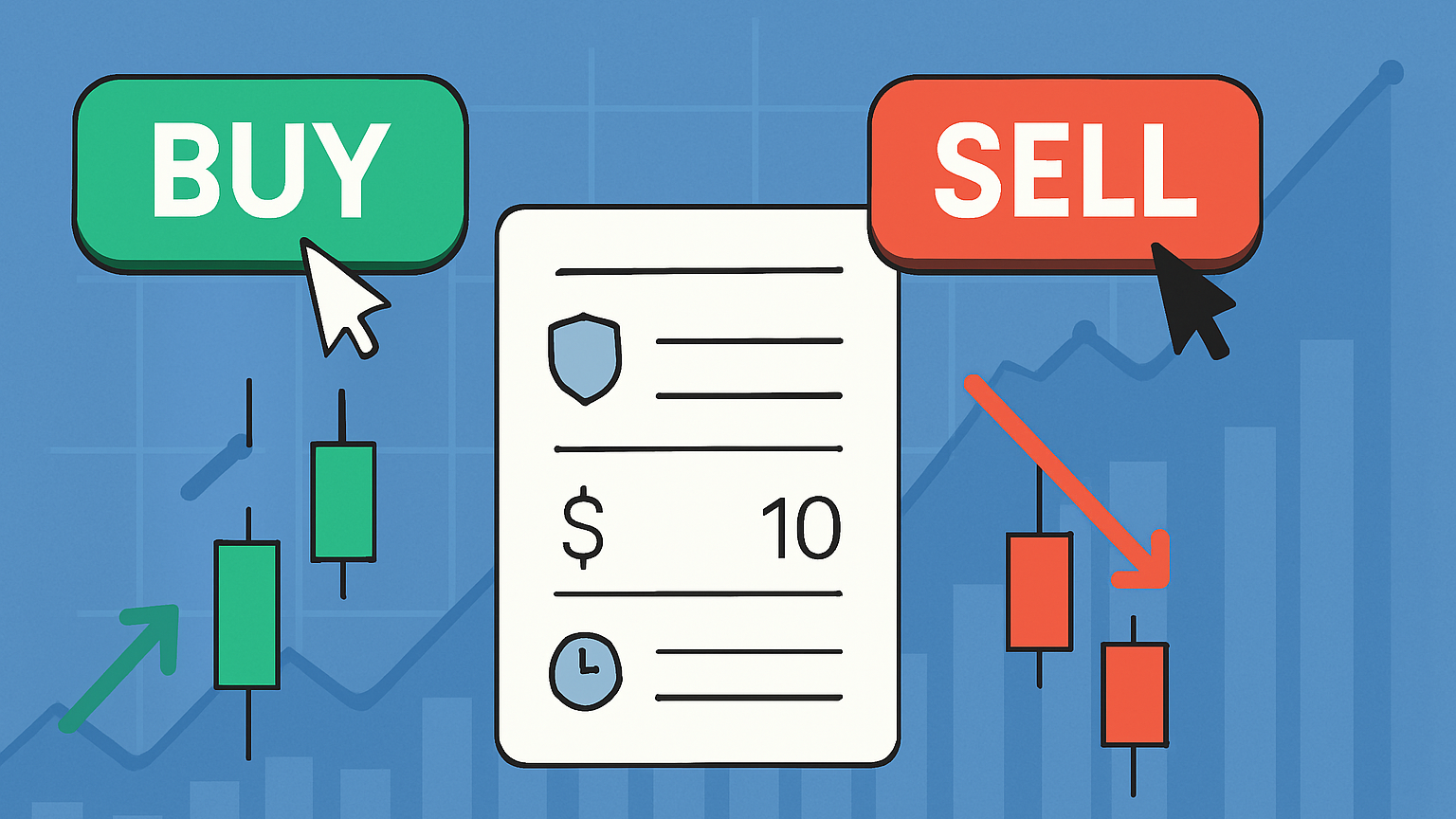Enhance your trading strategy by mastering five essential metrics that assess performance and manage risk effectively.
Want to improve your trading strategy? Focus on these five metrics to measure performance and manage risk effectively:
- Profit Factor: Tracks profitability by comparing total profits to total losses.
- Maximum Drawdown (MDD): Measures the largest drop in account value to assess risk.
- Sharpe Ratio: Evaluates risk-adjusted returns to balance risk and reward.
- Win Rate: Tracks the percentage of successful trades.
- Expectancy: Calculates the average profit or loss per trade over time.
Each metric offers unique insights, and combining them provides a complete view of your strategy's strengths and weaknesses. Leverage the advanced trading indicators, exclusive features, and the AI Backtesting Assistant available on TradingView through LuxAlgo to simplify tracking, backtesting, and refining these metrics for better results.
| Metric | What It Measures | Target |
|---|---|---|
| Profit Factor | Profitability | > 1.75 |
| Maximum Drawdown | Risk level | < 20% |
| Sharpe Ratio | Risk-adjusted returns | > 1.0 |
| Win Rate | Trade success rate | > 50% |
| Expectancy | Long-term profit per trade | Positive |
Start by analyzing these metrics to make data-driven decisions and refine your trading approach.
1. Profit Factor: Measuring Profitability
Profit factor is one of the simplest yet most effective ways to gauge how well a trading strategy performs. It shows how much profit your strategy generates compared to its losses.
What is Profit Factor?
Profit factor is calculated by dividing total profits by total losses. For example, a profit factor of 2.0 means your strategy earns $2 for every $1 it loses.
Here’s a breakdown of what different profit factor values indicate:
| Profit Factor | Performance |
|---|---|
| Below 1.0 | Losing money |
| 1.0 - 1.75 | Barely profitable |
| 1.75 - 3.0 | Strong performance |
| Above 3.0 | Outstanding (but double-check) |
How to Use Profit Factor Effectively
Traders often aim for a profit factor above 1.75 for dependable returns. However, be wary of unusually high values (above 4.0), as these could indicate overly optimized backtests or short-term market anomalies. To get a clearer picture, it’s essential to review profit factors across different timeframes and market conditions to confirm consistency.
Leverage the AI Backtesting Assistant provided by LuxAlgo to easily:
- Compare performance across various time periods
- Track how strategies behave under different market conditions
- Adjust strategies based on data insights
While profit factor is a great metric for evaluating profitability, it’s just one piece of the puzzle. Understanding risk factors, such as Maximum Drawdown, is just as important.
2. Maximum Drawdown: Assessing Risk
Maximum drawdown (MDD) measures the percentage drop from a peak account value to its lowest point before recovery. For example, if your account grows to $100,000 and then falls to $70,000 before bouncing back, the MDD is 30%. This figure is crucial for gauging how resilient a trading strategy is over time.
Here's a breakdown of MDD levels and their typical risk implications:
| Maximum Drawdown | Risk Level | What It Means |
|---|---|---|
| Below 15% | Conservative | Fits traders who prefer lower risk |
| 15-25% | Moderate | Acceptable for the majority of traders |
| 25-40% | Aggressive | Demands a higher tolerance for risk |
| Above 40% | High Risk | Often hard to sustain in the long run |
Managing and Recovering from Drawdowns
Recovering from a drawdown gets harder as losses deepen. For instance, a 30% drawdown requires a 42.9% gain to break even, while a 50% drawdown needs a full 100% recovery. To keep risks in check:
- Position Sizing: Limit exposure to 1-2% of your account per trade.
- Diversification: Spread trades across multiple markets and timeframes to avoid concentrated risks.
- Stop-Loss Orders: Use stop-losses to cap losses on individual trades.
How LuxAlgo Can Help
The AI Backtesting Assistant from LuxAlgo makes managing MDD easier by offering features such as:
- Real-time tracking of drawdown levels across various timeframes.
- Historical analysis to refine trading strategies.
- Automated alerts when drawdown limits are hit.
- Side-by-side comparisons of drawdown metrics under different market conditions.
By combining MDD insights with other metrics like Profit Factor, traders can better understand both their potential profits and the risks involved.
While MDD focuses on the worst-case scenario, metrics like the Sharpe Ratio provide a broader view of the trade-off between risk and reward.
3. Sharpe Ratio: Balancing Risk and Reward
The Sharpe Ratio is a key tool for assessing trading strategies, as it measures returns adjusted for risk. While Maximum Drawdown focuses on worst-case losses, the Sharpe Ratio delivers a broader perspective on how well a strategy balances risk and reward.
Understanding the Sharpe Ratio
Here’s how it works: if your trading strategy produces an average return of 10%, has a 5% standard deviation, and the risk-free rate is 2%, the Sharpe Ratio is calculated as:
(10% - 2%) / 5% = 1.6
Interpreting Sharpe Ratio Values
| Sharpe Ratio | Performance Level |
|---|---|
| < 0 | Poor |
| 0 - 0.75 | Below Average |
| 0.75 - 1.0 | Good |
| > 1.0 | Excellent |
| > 2.0 | Outstanding |
Institutional investors typically look for a Sharpe Ratio above 2.0, while retail traders often aim for at least 0.75 [3].
Real-Time Monitoring with LuxAlgo
LuxAlgo’s AI Backtesting Assistant offers tools to monitor and refine your Sharpe Ratio, including:
- Real-time tracking across different timeframes
- Automated alerts for ratio changes
- Performance comparisons in varying market conditions
- Suggestions for strategy adjustments based on historical data
Practical Considerations
When using the Sharpe Ratio to evaluate strategies, keep these tips in mind:
- Use longer timeframes and update calculations often for more accurate insights.
- Factor in current market conditions that could affect your strategy’s performance.
- Use treasury yields as your benchmark for the risk-free rate.
While the Sharpe Ratio highlights risk-adjusted returns, it’s worth pairing it with metrics like the Win Rate for a deeper understanding of individual trade outcomes.
4. Win Rate: Tracking Success Rate
Win rate measures how often trades are successful, but it doesn’t tell the whole story. To truly evaluate a trading strategy, you need to look at win rate alongside other metrics like the risk-reward ratio, Profit Factor, and Sharpe Ratio. Together, these metrics help traders fine-tune their strategies for consistent results.
Win rate is calculated as the percentage of winning trades out of the total number of trades. For example, if a strategy results in 60 profitable trades out of 100, the win rate is 60%.
Win Rate Benchmarks by Strategy Type
Different trading strategies tend to have varying win rates:
| Strategy Type | Typical Win Rate |
|---|---|
| Trend Following | 30-50% |
| Mean Reversion | 60-80% |
| Swing Trading | 40-60% |
More Than Just Numbers
Steve Cohen once pointed out that even the best traders are wrong nearly half the time. This highlights the importance of managing losses and maximizing gains when trades go in your favor.
Using LuxAlgo to Track Win Rate
LuxAlgo offers features such as PAC, S&O, and the AI Backtesting Assistant to monitor and improve your win rate in real time.
Tips for Improving Your Win Rate
- Focus on Quality Trades: Prioritize high-quality setups and adjust your strategy as market conditions change to keep your win rate steady.
- Position Sizing Matters: Even if your win rate is lower, smart position sizing can still lead to overall profitability.
Balancing win rate with a solid risk-reward ratio is key to long-term success. While win rate reflects short-term performance, expectancy gives a clearer picture of your strategy's potential over time.
5. Expectancy: Understanding Long-Term Performance
Win rate gives you a snapshot of short-term success, but expectancy digs deeper. It measures how profitable your strategy is over time by combining win rate with the size of your wins and losses.
How to Calculate Expectancy
The formula for expectancy is simple:
Expectancy = (Win Rate × Average Win) - (Loss Rate × Average Loss)
Let’s break it down with an example:
- Win rate: 55%
- Average win: €120
- Loss rate: 45%
- Average loss: €80
Using the formula: (0.55 × €120) - (0.45 × €80) = €30 per trade.
This €30 means that, on average, each trade with this strategy should bring in €30 of profit over time. Strategies with expectancy above €20 per trade are generally considered strong, while anything below zero needs reworking.
Tracking Expectancy with LuxAlgo
LuxAlgo’s AI Backtesting Assistant makes it easier to improve expectancy by offering features such as:
- Pattern recognition to fine-tune trade timing
- Risk management features for better control
- Market analysis to refine your strategy
- Performance tracking across different timeframes
Tips to Boost Expectancy
To increase expectancy, focus on:
- Adjusting position sizes based on confidence levels and market conditions
- Refining your entry and exit rules using LuxAlgo indicators
- Reviewing expectancy over at least 100 trades to ensure your results are statistically reliable
It’s also important to evaluate expectancy alongside other metrics like maximum drawdown and Sharpe ratio. A strategy with steady, reliable results might be more appealing than one with high expectancy but unpredictable swings.
Conclusion
Trading success hinges on a data-driven approach, and the five metrics covered – profit factor, maximum drawdown, Sharpe ratio, win rate, and expectancy – create a solid framework for evaluating performance. Relying on just one metric can lead to incomplete or even misleading assessments.
Each metric offers distinct insights, but their real strength comes from using them together. By combining these metrics, traders can:
- Understand risk and reward by evaluating potential gains alongside possible losses
- Spot weaknesses in strategies before they result in major setbacks
- Base decisions on data instead of emotions or gut feelings
- Stay consistent even as market conditions shift
Modern trading platforms make it easier to track and analyze these metrics. For instance, LuxAlgo provides features that allow traders to evaluate multiple metrics at once across different timeframes and market scenarios.
To stay on top of these metrics, traders can adopt a structured review schedule based on their trading activity:
| Time Period | Review Frequency |
|---|---|
| Daily | End of each trading day |
| Weekly | End of trading week |
| Monthly | Monthly portfolio review |
Markets are always changing, so refining your strategy is an ongoing process. Regularly reviewing these metrics ensures your approach stays aligned with current market dynamics.
FAQs
How to evaluate a trading strategy?
When assessing a trading strategy, focus on metrics that provide a clear picture of both performance and risk. Here are some key benchmarks to aim for:
| Metric | Target Range |
|---|---|
| Profit Factor | Greater than 2.0 |
| Maximum Drawdown | Less than 20% |
| Sharpe Ratio | Greater than 1.0 |
| Win Rate | Over 50% |
| Expectancy | Positive |
A thorough evaluation includes analyzing the strategy's performance under various market conditions. Backtesting solutions provided by LuxAlgo can help you test these metrics effectively, ensuring a well-rounded approach to both returns and risks [1][2].
Key aspects to consider:
- How consistent the strategy is during volatile markets and across different timeframes.
- The balance between risk and reward metrics.
- Ongoing performance tracking and periodic adjustments to improve the strategy.







